Roller Skiing: Enjoy Cross Country Throughout the Year
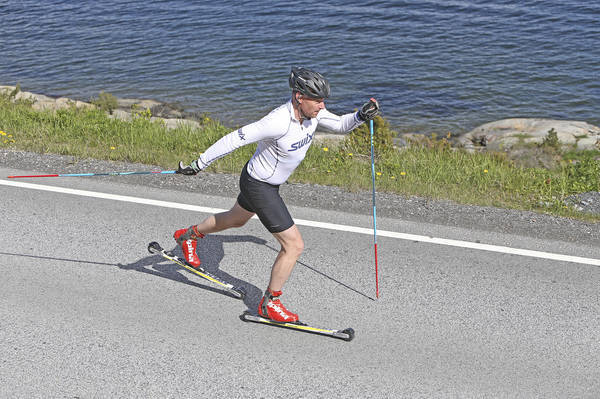
Are you intrigued by the concept of cross-country skiing on wheels, specifically roller skiing? Discover how the sport operates, the techniques involved, and why it provides a comprehensive full-body workout. We will also go over practical rollerski tips to help you train more effectively and stay safe.
There's a saying: "Good skiers are made during the summer," and it's accurate. To remain fit for cross-country skiing in winter, you need to keep active during spring, summer, and autumn.
Overview
Overview
Defining Roller Skiing
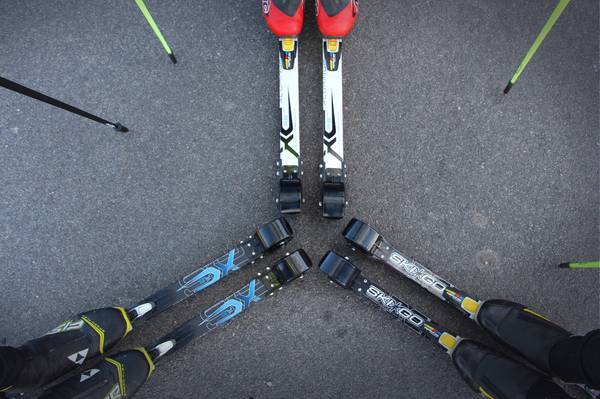
Roller skiing serves as a summer substitute for cross-country skiing and is done using wheels rather than snow. Participants utilise roller skis, poles, and skiing techniques to replicate the skiing experience. The sport enables year-round training and helps maintain peak fitness levels in the absence of snow. Often referred to as cross-country without snow, it’s an apt description since the movements and muscle involvement are nearly the same.
Roller Skiing: Perfect Off-Season Cross Country Conditioning
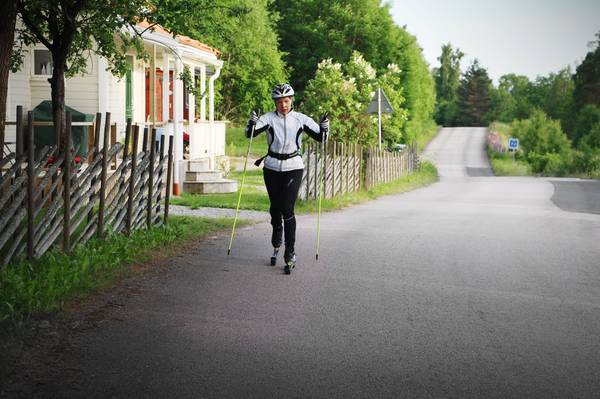
One significant benefit of roller skiing is the ability it gives athletes to continue their cross-country training all year long. As the snow disappears, roller skiing becomes a vital tool for off-season cross-country training, mimicking the techniques, movements, and intensity of snow skiing – using the same muscle groups and cardiovascular systems.
For both casual skiers and professional racers, roller skiing protects against losing technique, fitness, and coordination during warmer months. It’s the most efficient way to bridge the seasonal training gap and enables consistent cross-country training throughout the year.
The Difficulty Level of Roller Skiing
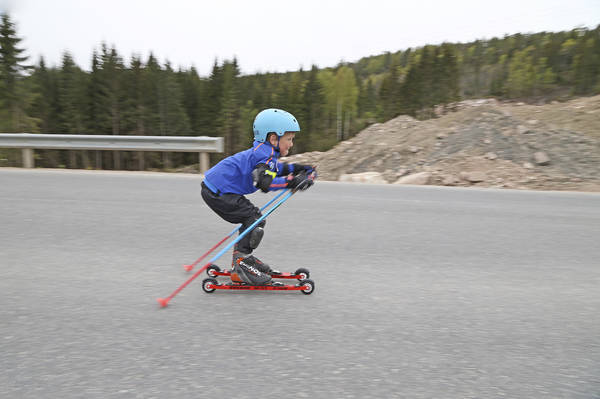
Initially, roller skiing can be moderately difficult. Its technique closely mirrors cross-country skiing, which is beneficial if you have skiing experience, though not essential. Many beginners require a few sessions to adapt to balancing, timing, and coordination. The learning curve varies based on your physical fitness and prior experiences with sports such as running, skating, or skiing.
Expect a period of adaptation as you cultivate confidence and control. Practising on flat, smooth surfaces can significantly ease the process. With steady practice, most will achieve good technique and control within a few weeks.
Why Roller Skiing Is a Highly Effective Workout
Roller skiing is considered one of the most complete workouts available. It engages your entire body – including the arms, core, back, and legs – simultaneously. As such, it burns more calories per hour than most other endurance sports, requiring you to push, glide, and stabilise in a full-body rhythm.
Beyond physical advantages, roller skiing develops mental focus and coordination. It tests your balance, timing, and technique on each terrain change. Moreover, it’s a low-impact activity that is gentler on the joints compared to running.
Does Roller Skiing Promote Muscle Growth?
Roller skiing enhances strength in your legs, glutes, and hips through repeated push-offs and gliding phases. The arms, shoulders, and back are similarly involved during poling. Over time, these consistent movements lead to noticeable muscle tone and improved muscle endurance.
Although it won’t increase muscle mass like weightlifting, it does facilitate the development of lean muscle, particularly in the core and lower body. Incorporating resistance exercises into your rollerski training plan can amplify this effect.
Beginner Tips for Roller Skiing
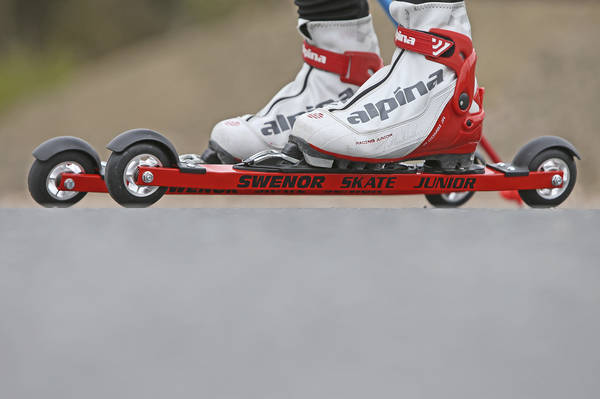
Just starting out? Here are some vital tips to ensure safety and expedite progress:
- Wear protective equipment: a helmet, gloves, and knee pads are vital
- Practise on smooth, flat roads or bike paths with minimal traffic
- Prioritise balance and gliding before accelerating
- Utilise your poles for stability, not solely for pushing forward
- Engage in short, controlled sessions to develop coordination
- Always perform warm-up and cooldown exercises
Mastering the Art of Braking on Roller Skis
Learning to brake is one of the most crucial skills to acquire early. Roller skis lack integrated brakes, so stopping safely takes practice. Hone your braking technique on a flat, smooth area free of traffic before serious skiing.
Below are the primary methods for stopping or slowing down on roller skis:
Snowplough Brake (Traditional Technique)
Tip the heels outward to shape the skis into a “V” and allow the inner edges of the wheels to create friction. This method slowly decelerates you on gentle inclines.
Pole Dragging Technique
Lightly touch the ground behind you with one pole while keeping your arm relaxed. This technique creates drag and slows you down.
Ski Dragging Method
Mirroring braking on inline skates, you can drag one ski behind, positioned perpendicularly to the other ski. This technique can be challenging, particularly with longer skis, so it’s not advisable for beginners. However, once mastered, it’s an effective way to brake.
Utilising Classic Cross-Country Technique on Roller Skis
The classic technique shares similarities with walking or running. You glide on one ski as the opposite arm and pole push off. Timing and rhythm are crucial components.
- Maintain a tall and relaxed upper body
- Completely transfer your weight onto each ski
- Utilise your arms to drive the poles directly back
- Keep your kick brief and sharp
This technique is optimal on flat to moderate landscapes and is ideal for enhancing endurance and coordination.
Roller Skiing with the Skating Technique
The skating technique offers rapid and dynamic movements and involves pushing sideways in a V-pattern akin to ice skating. It demands a more potent leg push and robust core strength.
- Concentrate on powerful side-to-side motions
- Incorporate double poling for enhanced speed and control
- Engage your core to improve balance
- Practise timing to retain momentum on ascents
Skating delivers a high-intensity workout and is popular among more experienced users, but beginners can also pick it up.
